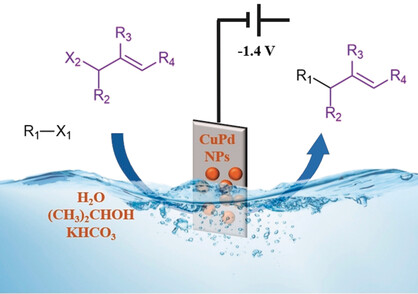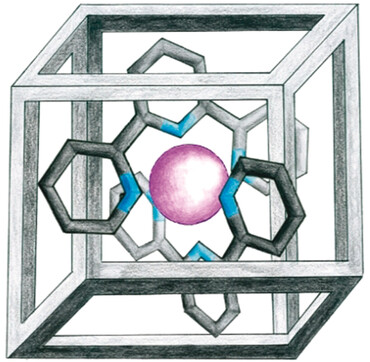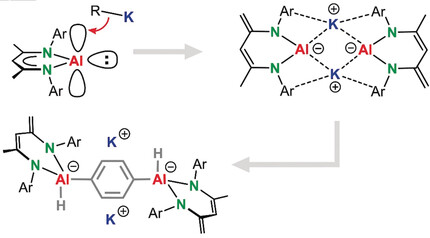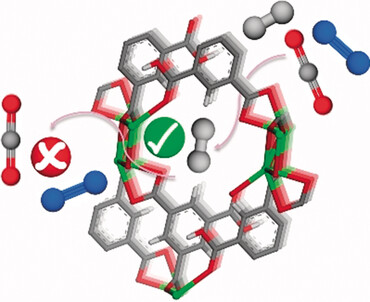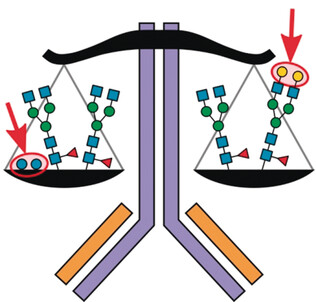Journal list menu
Export Citations
Download PDFs
Titelbild
Titelbild: Solar-Assisted eBiorefinery: Photoelectrochemical Pairing of Oxyfunctionalization and Hydrogenation Reactions (Angew. Chem. 37/2020)
- Page: 15897
- First Published: 20 July 2020

Solare eBioraffinerie. Nach dem Vorbild der natürlichen Photosynthese dienen biokatalytische photoelektrochemische (PEC) Plattformen zur Umwandlung von Sonnenenergie in nützliche Chemikalien durch die Kombination von Redoxbiokatalyse und Photoelektrokatalyse. Durch die gezielte Integration von PEC-Systemen mit biokatalytischen Redoxreaktionen können simultan an beiden Elektroden wertvolle Chemikalien mittels solargetriebener Elektronen und Wasser produziert werden. C. B. Park et al. demonstrieren in ihrer Zuschrift auf S. 16020, wie diese Studie eine neue Richtung für solare Biotransformationen für die nachhaltige Synthese von Feinchemikalien aufzeigt.
Innentitelbild: Ultramicropore Engineering by Dehydration to Enable Molecular Sieving of H2 by Calcium Trimesate (Angew. Chem. 37/2020)
- Page: 15898
- First Published: 10 August 2020
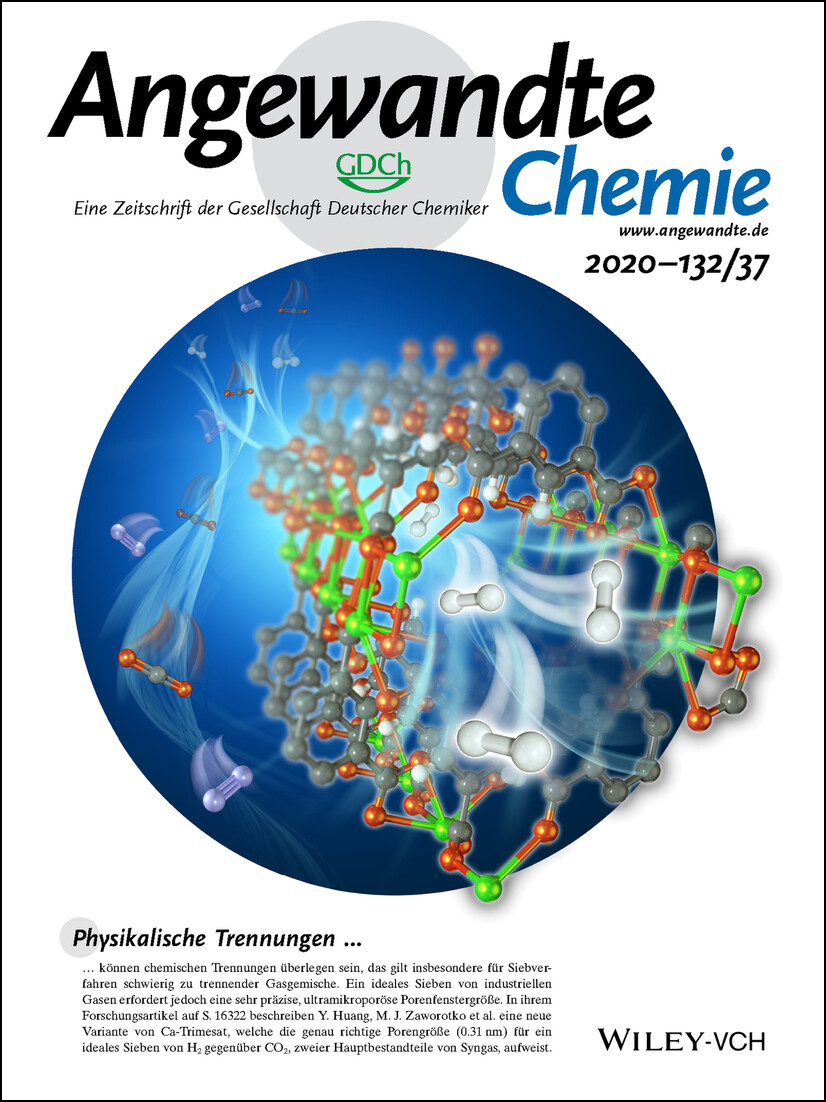
Physikalische Trennungen können chemischen Trennungen überlegen sein, das gilt insbesondere für Siebverfahren schwierig zu trennender Gasgemische. Ein ideales Sieben von industriellen Gasen erfordert jedoch eine sehr präzise, ultramikroporöse Porenfenstergröße. In ihrem Forschungsartikel auf S. 16322 beschreiben Y. Huang, M. J. Zaworotko et al. eine neue Variante von Ca-Trimesat, welche die genau richtige Porengröße (0.31 nm) für ein ideales Sieben von H2 gegenüber CO2, zweier Hauptbestandteile von Syngas, aufweist.
Innenrücktitelbild: Magnetically Induced Alignment of Natural Products for Stereochemical Structure Determination via NMR (Angew. Chem. 37/2020)
- Page: 16387
- First Published: 10 August 2020
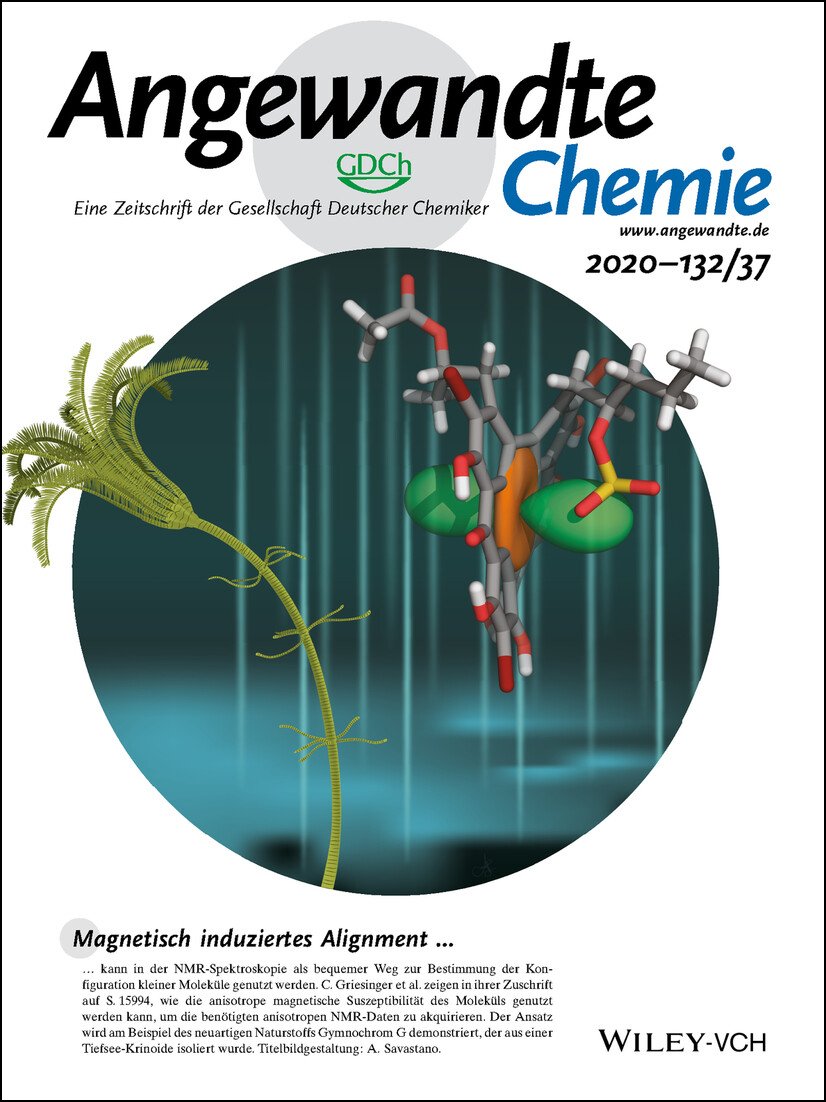
Magnetisch induziertes Alignment kann in der NMR-Spektroskopie als bequemer Weg zur Bestimmung der Konfiguration kleiner Moleküle genutzt werden. C. Griesinger et al. zeigen in ihrer Zuschrift auf S. 15994, wie die anisotrope magnetische Suszeptibilität des Moleküls genutzt werden kann, um die benötigten anisotropen NMR-Daten zu akquirieren. Der Ansatz wird am Beispiel des neuartigen Naturstoffs Gymnochrom G demonstriert, der aus einer Tiefsee-Krinoide isoliert wurde. Titelbildgestaltung: A. Savastano.
Rücktitelbild: Tetrazine Carbon Nanotubes for Pretargeted In Vivo “Click-to-Release” Bioorthogonal Tumour Imaging (Angew. Chem. 37/2020)
- Page: 16388
- First Published: 04 August 2020
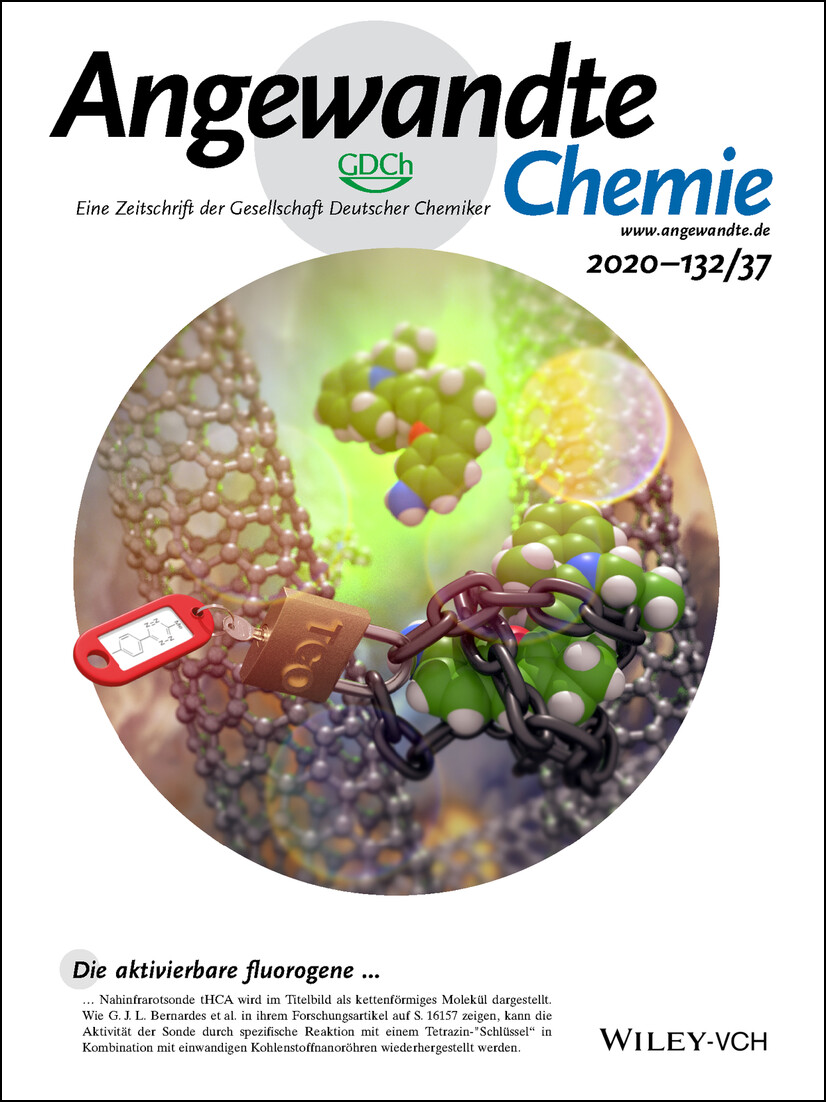
Die aktivierbare fluorogene Nahinfrarotsonde tHCA wird im Titelbild als kettenförmiges Molekül dargestellt. Wie G. J. L. Bernardes et al. in ihrem Forschungsartikel auf S. 16157 zeigen, kann die Aktivität der Sonde durch spezifische Reaktion mit einem Tetrazin-"Schlüssel” in Kombination mit einwandigen Kohlenstoffnanoröhren wiederhergestellt werden.
Frontispiz
Frontispiz: A Short-Lived but Highly Cytotoxic Vanadium(V) Complex as a Potential Drug Lead for Brain Cancer Treatment by Intratumoral Injections
- First Published: 07 September 2020

Zytotoxische Verbindungen In ihrer Zuschrift auf S. 15968 präsentieren D. C. Crans, P. A. Lay et al. einen hoch zytotoxischen Vanadium(V)-Komplex als eine potenzielle Wirkstoffleitverbindung für die Behandlung von Gehirnkrebs.
Frontispiz: Fabricating Dual-Atom Iron Catalysts for Efficient Oxygen Evolution Reaction: A Heteroatom Modulator Approach
- First Published: 07 September 2020

Nanokatalyse In ihrem Forschungsartikel of S. 16147 beschreiben Q. Xu et al. die Herstellung eines zweiatomigen Eisenkatalysators für die Sauerstoffevolution. Die Aggregation der Eisenatome zu Clustern wird durch Heteroatomaustausch verhindert.
Graphisches Inhaltsverzeichnis
Graphisches Inhaltsverzeichnis: Angew. Chem. 37/2020
- Pages: 15901-15920
- First Published: 07 September 2020
Autoren-Profil
Highlights
Supramolekulare Chemie
Prismaren: Ein neues Naphthol-basiertes makrozyklisches Aren
- Pages: 15926-15928
- First Published: 26 March 2020
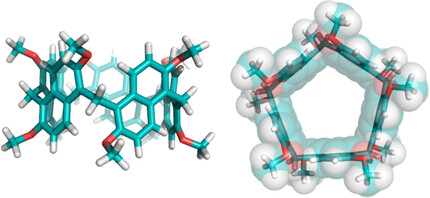
Neue makrozyklische Arene, sogenannte Prism[n]arene, werden leicht aus 2,6-Dimethoxynaphthalin und Paraformaldehyd in Gegenwart von Templaten synthetisiert. Sie haben eine prismenartige Struktur mit elektronenreicher Kavität und zeigen exzellente Bindungsaffinitäten für organische Kationen. Mit ihrer einfachen Synthese und guten Wirt-Gast-Chemie sollten sich zahlreiche Einsatzmöglichkeiten in der supramolekularen Chemie finden lassen.
Standpunkt
Hazard Assessment
On the Use of Differential Scanning Calorimetry for Thermal Hazard Assessment of New Chemistry: Avoiding Explosive Mistakes
- Pages: 15930-15934
- First Published: 18 August 2020
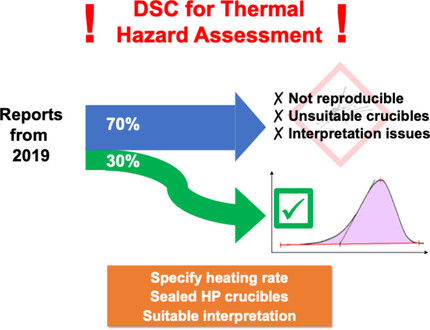
Analysis of the use of differential scanning calorimetry (DSC) for thermal hazard assessment in 2019 shows some alarming trends. Many reports are not reproducible, do not follow established best practices and the conclusions drawn are not supported by the data presented. This Viewpoint discusses these issues and offer simple guidance on how to avoid them.
Kurzaufsätze
Magnetic Nanoparticles
Advances in the Interfacial Assembly of Mesoporous Silica on Magnetite Particles
- Pages: 15936-15949
- First Published: 08 October 2019
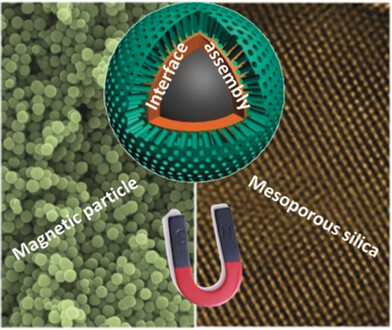
Multifaceted materials: Interface assembly enables the integration of magnetic particles and mesoporous materials to form advanced core–shell magnetic mesoporous materials for a variety of applications in catalysis, environmental remediation, and biomedicine. This Minireview summarizes progress made in the synthesis of core–shell magnetic mesoporous silica and the adjustment of key parameters, including pore size, morphology, and pore orientation.
Aufsätze
Nanomedizin
Herausforderungen und Perspektiven von DNA-Nanostrukturen in der Biomedizin
- Pages: 15950-15966
- First Published: 29 February 2020
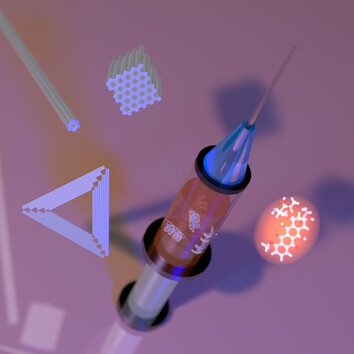
Die DNA-Nanotechnologie hat eine große Auswahl an biomedizinischen Nanostrukturen hervorgebracht, jedoch sind diese DNA-Nanostrukturen häufig nur begrenzt stabil und äußerst immunogen. Dieser Aufsatz behandelt biomedizinische Anwendungen von DNA-Nanostrukturen, beschreibt die Herausforderungen, denen DNA-Nanostrukturen in der physiologischen Umgebung gegenüberstehen, und diskutiert Lösungsansätze.
Zuschriften
Anti-Cancer Treatment | Hot Paper
A Short-Lived but Highly Cytotoxic Vanadium(V) Complex as a Potential Drug Lead for Brain Cancer Treatment by Intratumoral Injections
- Pages: 15968-15972
- First Published: 29 June 2020

V for Vanadium: A drastic decrease in cytotoxicity of a mixed-ligand VV complex 1 after its decomposition in biological media can be employed in intratumoral injections, particularly for brain cancer. The release of relatively non-toxic V decomposition products into the blood is expected to reduce the side effects and may also be beneficial due to the known neurostimulatory properties of V.
Anodes | Very Important Paper
Double-Shelled C@MoS2 Structures Preloaded with Sulfur: An Additive Reservoir for Stable Lithium Metal Anodes
- Pages: 15973-15977
- First Published: 27 May 2020

Functional microcapsules for stable lithium metal anodes (LMAs) have been designed based on double-shelled C@MoS2 nanostructures preloaded with sulfur. The as-prepared C@MoS2/S structures can provide a long-term supply of polysulfides, which serve as an effective additive for improving the stability of the solid electrolyte interphase on the LMA, thus prolonging the cycle life.
Electrocatalysis | Hot Paper
Water-Soluble Polymers with Appending Porphyrins as Bioinspired Catalysts for the Hydrogen Evolution Reaction
- Pages: 15978-15982
- First Published: 26 May 2020
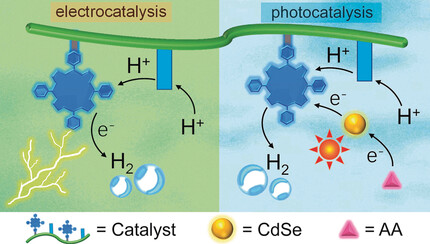
Water-soluble polymers for HER: As inspired by enzymes, three water-soluble polymers with appending Co porphyrins and different side-chain groups are designed. These catalysts show high activity and stability for electro- and photocatalytic HER in neutral aqueous solutions. With the same Co porphyrin, the activity can be fine-tuned by using different side-chain groups.
Hydrogen Generation | Hot Paper
Cobalt Single-Atom Catalysts with High Stability for Selective Dehydrogenation of Formic Acid
- Pages: 15983-15988
- First Published: 27 May 2020
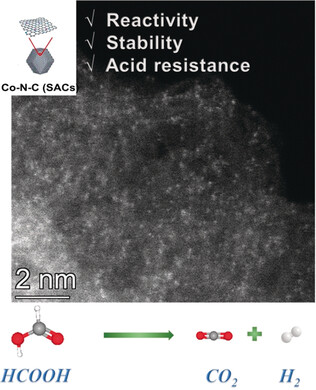
The small print: Co-N-C single-atom catalysts were derived from metal– organic frameworks and compared with related nanoparticles in the selective dehydrogenation of formic acid. The highly dispersed single CoIINx sites demonstrated improved reactivity and resistance to acid, constituting the current state-of-the-art in low-cost earth-abundant catalysts for this transformation.
Single-Atom Catalysis | Hot Paper
Regulating Charge Transfer of Lattice Oxygen in Single-Atom-Doped Titania for Hydrogen Evolution
- Pages: 15989-15993
- First Published: 15 April 2020
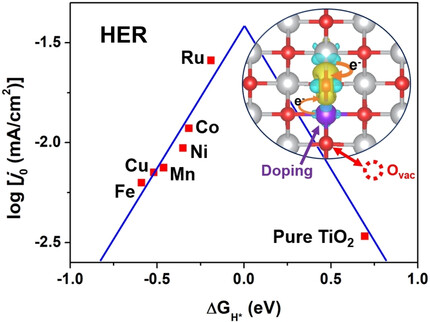
Listen to HER tune: Regulating charge transfer by doping with single transition-metal atoms and making oxygen vacancies on a TiO2 nanosheet is reported. These approaches modulate the activity of the lattice oxygen atom in titania, providing a way to tune and thus optimize catalysis of the hydrogen evolution reaction (HER).
NMR Spectroscopy | Hot Paper
Magnetically Induced Alignment of Natural Products for Stereochemical Structure Determination via NMR
- Pages: 15994-15998
- First Published: 04 May 2020
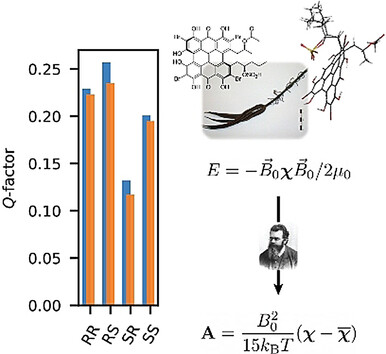
Properly aligned: Residual dipolar couplings and residual chemical shift anisotropies can be acquired from natural products without special sample preparation using magnetically induced alignment. On the basis of two examples—the novel natural product gymnochrome G and the alkaloid strychnine—these data, together with the predicted alignment, yield the correct configuration with high certainty.
Molecular-Level Switching | Hot Paper
Femtosecond Polarization Switching in the Crystal of a [CrCo] Dinuclear Complex
- Pages: 15999-16003
- First Published: 20 May 2020
![Femtosecond Polarization Switching in the Crystal of a [CrCo] Dinuclear Complex](/cms/asset/60685c6c-b778-4a1d-b8db-e76c328c059b/ange202004583-toc-0001-m.jpg)
Full speed ahead: Ultrafast spectroscopy revealed that photoinduced polarization switching in the crystal of a [CrCo] dinuclear complex proceeded with a time constant of 280 fs (see picture; LT/HT=low-/high-temperature, dhsq/dhbq= deprotonated dihydroxysemi-/benzoquinone). The pronounced appearance of a low-frequency coherent vibration and its mechanism suggest that the corresponding excited-state vibrational mode facilitates the polarization switching.
Arsonium Ylides
Nature of the Arsonium-Ylide Ph3As=CH2 and a Uranium(IV) Arsonium–Carbene Complex
- Pages: 16004-16008
- First Published: 02 June 2020
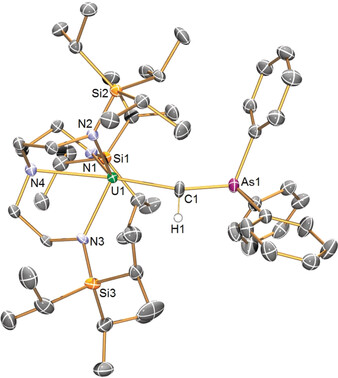
A new route to the classical ylide Ph3As=CH2 resolves previous difficulties in its synthesis and isolation. Its structural authentication, 45 years after it was first made, confirms that the ylide is pyramidal not planar, and it enables the synthesis of a uranium–arsonium–carbene, the first structurally characterised example of an arsonium–carbene complex of any metal.
Structure Elucidation
Absolute Configuration of Small Molecules by Co-Crystallization
- Pages: 16009-16013
- First Published: 22 May 2020
Solid-State Structures
Hierarchically Structured Allotropes of Phosphorus from Data-Driven Exploration
- Pages: 16014-16019
- First Published: 04 June 2020
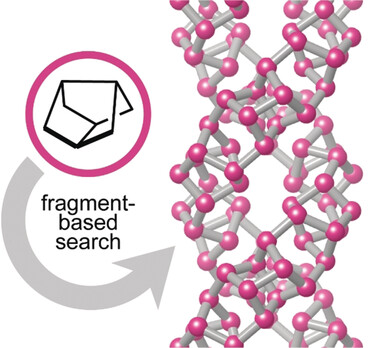
Double helices and other hierarchical structures of elemental phosphorus can be built from the simple P8 cage. Machine-learning-driven and fragment-based searches enable a rapid exploration of structural space, and dispersion-corrected DFT computations reveal the resulting structures to be more stable than white phosphorus.
Photoelectrochemistry | Hot Paper
Solar-Assisted eBiorefinery: Photoelectrochemical Pairing of Oxyfunctionalization and Hydrogenation Reactions
- Pages: 16020-16024
- First Published: 03 June 2020

A biocatalytic photoelectrochemical platform for solar-assisted dual biotransformations is constructed by wiring a Mo-doped BiVO4 photocathode and a hierarchical porous ITO electrode. The deliberate integration of enzymatic redox processes into the photoelectrochemical cell simultaneously facilitates peroxygenase- and ene-reductase-mediated enantioselective synthesis of high-value chemicals using solar-powered electrons and water.
Amination | Hot Paper
Continuous Synthesis of Aryl Amines from Phenols Utilizing Integrated Packed-Bed Flow Systems
- Pages: 16025-16030
- First Published: 09 July 2020

Flow with it: Dehydrative amination of phenols under continuous-flow conditions has been developed. In an integrated packed-bed flow system containing heterogeneous Pd catalysts, phenols reacted with amines to generate aryl amines and small amounts of easily removable co-products. The method has high product selectivity and excellent functional-group tolerance, so that variously substituted aryl amines can be selectively prepared in high yields.
Corroles
Copper 1,19-Diaza-21,24-dicarbacorrole: A Corrole Analogue with an N−N Linkage Stabilizes a Ground-State Singlet Organocopper Species
- Pages: 16031-16035
- First Published: 25 May 2020
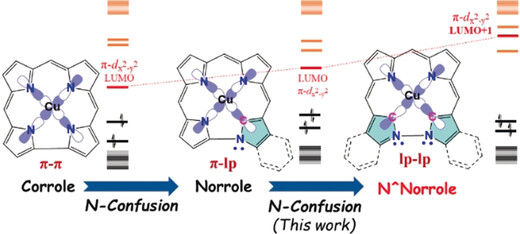
More confusion?! In the copper complex of dicarbacorrole (referred to as N^Norrole), the lone pair electrons in the N(sp2)–N(sp2) linkage in the circuit played a crucial role in the global 18π conjugation circuit due to Hückel aromatic stabilization. The resulting NNCC coordination core in copper facilitated the upshifting of the Cu 3dx2–y2-dominant orbital to afford a singlet organocopper species.
Single-Atom Catalysts | Hot Paper
Polyvinylpyrrolidone-Coordinated Single-Site Platinum Catalyst Exhibits High Activity for Hydrogen Evolution Reaction
- Pages: 16036-16041
- First Published: 20 May 2020
Aromaticity
NIR-Absorbing π-Extended Azulene: Non-Alternant Isomer of Terrylene Bisimide
- Pages: 16042-16046
- First Published: 22 May 2020

A non-alternant isomer of terrylene bisimide was synthesized by palladium-catalyzed [3+3] annulation of azulene and naphthalimide. It was functionalized by simple bromination and nucleophilic substitution. These π-extended azulenes show NIR absorptions and planar geometries with an aromatic azulene moiety, as confirmed by crystallographic analysis and theoretical calculations.
Electrochemistry
Competitive Salt Precipitation/Dissolution During Free-Water Reduction in Water-in-Salt Electrolyte
- Pages: 16047-16051
- First Published: 10 May 2020
Arenes
Trifluoromethyl Sulfoxides: Reagents for Metal-Free C−H Trifluoromethylthiolation
- Pages: 16052-16056
- First Published: 28 May 2020
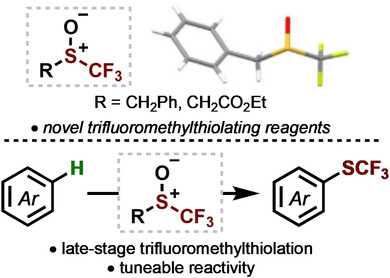
May I interrupt? Taking advantage of the interrupted Pummerer reaction, trifluoromethyl sulfoxides engage in the metal-free C−H trifluoromethylthiolation of (hetero)arenes, including drug molecules and natural products. This new class of trifluoromethylthiolating reagent exploits a new strategy for trifluoromethylthiolation in which sulfonium salts are assembled and selectively deconstructed.
Helicenes
Compressing Double [7]Helicene by Successive Charging with Electrons
- Pages: 16057-16061
- First Published: 03 June 2020
Catalysis
Pd-Senphos Catalyzed trans-Selective Cyanoboration of 1,3-Enynes
- Pages: 16062-16066
- First Published: 08 June 2020
Electrocatalysis
CuPd Nanoparticles as a Robust Catalyst for Electrochemical Allylic Alkylation
- Pages: 16067-16070
- First Published: 26 May 2020
Metallacycles | Hot Paper
Synthesis of a Stable N-Hetero-RhI-Metallacyclic Silanone
- Pages: 16071-16075
- First Published: 04 June 2020

A N-hetero-RhI-metallacyclic silanone has been synthesized. This silanone is stable in solution at 60 °C and only slowly isomerizes at 120 °C, via an intramolecular C(sp3)−H bond insertion. This RhI-substituted silanone can react either on the Si=O function or the Rh center, depending on the type of reagents.The reaction with H2, resulting in the hydrogenation of silanone moiety, proceeds via cooperative involvement of both sites.
DNA Nanotechnology
Cage Compounds
Iron in a Cage: Fixation of a Fe(II)tpy2 Complex by Fourfold Interlinking
- Pages: 16081-16086
- First Published: 15 May 2020
Sensors | Hot Paper
Universal Strategy for Improving the Sensitivity of Detecting Volatile Organic Compounds by Patterned Arrays
- Pages: 16087-16091
- First Published: 09 June 2020
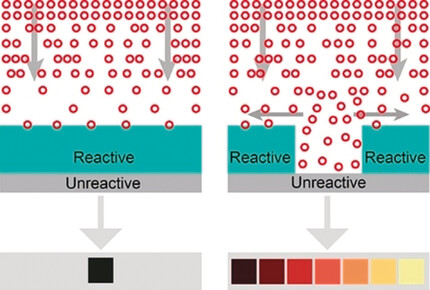
Molecular diffusion ultimately determines the sensitivity of gas sensors, whose driving force is directly proportional to the analyte concentration gradient. When the vertical diffusion was switched to the integration of vertical and horizontal diffusion, the gas sensors fabricated on patterned arrays displayed an order of magnitude higher sensitivity than their counterpart film-based sensors.
On-Surface Synthesis
Graphene-Like Covalent Organic Framework with a Wide Band Gap Synthesized On Surface via Stepwise Reactions
- Pages: 16092-16096
- First Published: 09 June 2020
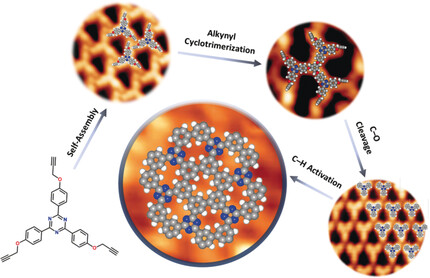
Step by step: A well-defined graphene-like 2D polymer with a wide band gap has been fabricated on Au(111). Distinct stepwise on-surface reactions, including alkynyl cyclotrimerization, C−O bond cleavage, and C−H bond activation, were triggered on demand, leading to product evolution in a controlled step-by-step manner.
Supramolecular Chemistry | Hot Paper
Quantitative Supramolecular Heterodimerization for Efficient Energy Transfer
- Pages: 16097-16101
- First Published: 03 June 2020

Quantitative generation of hetero-chromophore dimers is realized through cucurbit[8]uril-directed self-sorting, favored by the introduction of designed, shape-complementary moieties. This process results in discrete heterodimeric stacking through supramolecular confinement, enabling efficient interchromophoric energy transfer upon photoexcitation.
Perovskites | Hot Paper
Atomic-Scale Insight into Exsolution of CoFe Alloy Nanoparticles in La0.4Sr0.6Co0.2Fe0.7Mo0.1O3−δ with Efficient CO2 Electrolysis
- Pages: 16102-16107
- First Published: 25 May 2020
Asymmetric Reduction | Hot Paper
Tackling N-Alkyl Imines with 3d Metal Catalysis: Highly Enantioselective Iron-Catalyzed Synthesis of α-Chiral Amines
- Pages: 16108-16111
- First Published: 26 May 2020

Ironing imines: The first iron-catalyzed asymmetric reduction of N-alkyl imines is reported. A molecularly defined iron complex catalyzes the highly enantioselective hydroboration of various N-alkyl imines, providing access to the corresponding α-chiral amines in high yields and stereoselectivities. The earth-abundant metal catalyst was applied in the synthesis of the pharmaceuticals Fendiline and Tecalcet.
Nonlinear Optics | Very Important Paper
Rational Design of the Metal-Free KBe2BO3F2⋅(KBBF) Family Member C(NH2)3SO3F with Ultraviolet Optical Nonlinearity
- Pages: 16112-16115
- First Published: 14 June 2020
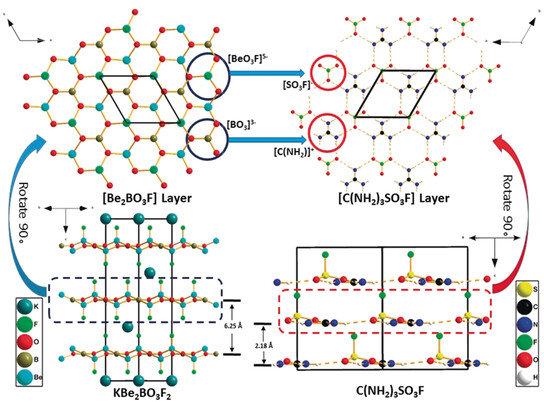
New optics: The first fluorosulfonic ultraviolet (UV) nonlinear optical (NLO) material, C(NH2)3SO3F, is rationally designed by taking KBe2BO3F2 (KBBF) as the parent compound. C(NH2)3SO3F is a metal-free UV NLO crystal that benefits from the coplanar configuration of the C(NH2)3+ cationic groups, and it possesses a large second harmonic generation response of 5×KDP and a moderate birefringence of 0.133@1064 nm.
Low-Valent Complexes
Boosting Low-Valent Aluminum(I) Reactivity with a Potassium Reagent
- Pages: 16116-16120
- First Published: 25 May 2020
Bioimaging | Hot Paper
Rational Design of Cyclometalated Iridium(III) Complexes for Three-Photon Phosphorescence Bioimaging
- Pages: 16121-16125
- First Published: 30 May 2020
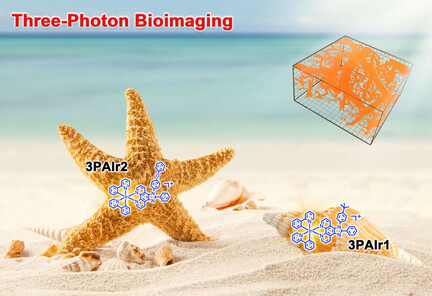
Cyclometalated iridium(III) complexes were developed as mitochondria-targeted three-photon phosphorescence agents for confocal imaging and phosphorescence lifetime imaging. The agents can be used from monolayer cells to the living body, with both large penetration depth and great resolution at an excitation wavelength of 980 nm.
Intramolecular Charge Transfer | Hot Paper
A Photoisomerization-Activated Intramolecular Charge-Transfer Process for Broadband-Tunable Single-Mode Microlasers
- Pages: 16126-16130
- First Published: 09 June 2020
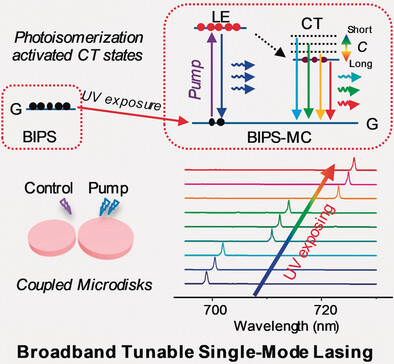
Gaining ground: Optical excitation of spiropyrans quantitatively transforms them into merocyanines with a strong intramolecular charge-transfer (ICT) emission. The gain region of the merocyanine isomers shifted with photoisomerization because the increased polarity of the molecular environment lowered the ICT energy levels. Broadband-tunable single-mode lasing was achieved based on the controllable ICT processes in polymeric coupled microdisks.
Fibrous Proteins
Spidroin-Inspired, High-Strength, Loofah-Shaped Protein Fiber for Capturing Uranium from Seawater
- Pages: 16131-16135
- First Published: 09 June 2020
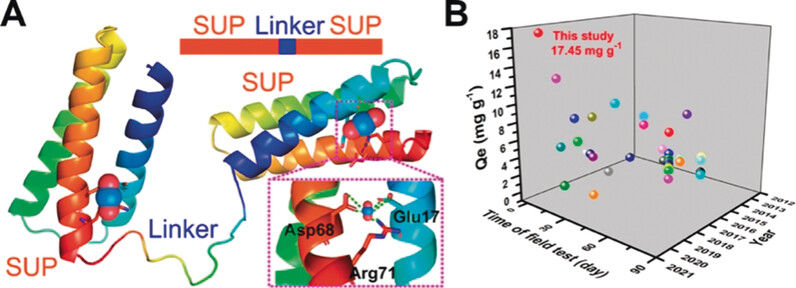
Caught in a web: Inspired by the similarity of the 3D structure of superb-uranyl binding protein SUP to that of spidroin from spider silk, a chimeric protein, DSUP, containing two copies of SUP was designed and spun into protein fiber. Impressively, the high-strength DSUP fiber shows ultrahigh, ultrafast, and highly selective uranium extraction ability in natural seawater.
Chlorfluoride
Verbesserter Zugang zu organisch löslichen Di- und Tetrafluoridochlorat(I/III)-Salzen
- Pages: 16136-16140
- First Published: 27 May 2020
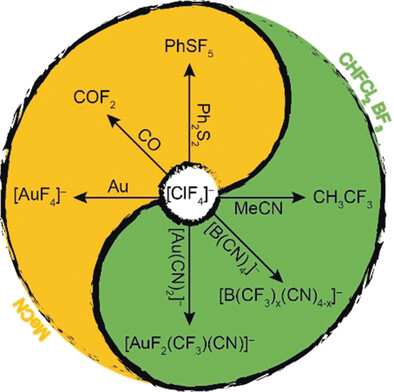
Die Synthese von Tetraalkylammoniumtetrafluoridochlorat(III) wird beschrieben. In Acetonitril wird ein Chloridsalz bei tiefen Temperaturen mit verdünntem Fluor umgesetzt. Anwendungen des [ClF4]−-Salzes werden durch die Überführung von Ph2S2 in PhSF5, den Austausch der CN-Gruppen in Acetonitril und Tetracyanoborat in CF3-Gruppen, die Reaktion mit CO zu Fluorphosgen und die Bildung des Tetrafluoridoaurates [AuF4]− aus elementarem Gold untersucht.
Phosphasilene
Chemie freier Radikale von Phosphasilenen
- Pages: 16141-16146
- First Published: 02 June 2020
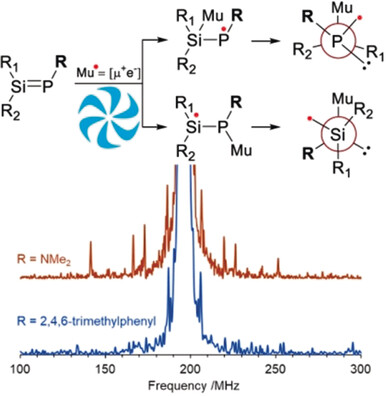
Radikal-Rotationen um Si-P-Bindungen: Myonium, ein leichteres Isotop von H, reagiert mit Phosphasilenen zu P-zentrierten und/oder Si-zentrierten Radikalen. In manchen Fällen können mehrere Rotamerkonformationen desselben Radikals nachgewiesen werden, je nach Art der Substituenten des verwendeten Phosphasilens.
Forschungsartikel
Ultrasmall Metal Clusters | Very Important Paper
Fabricating Dual-Atom Iron Catalysts for Efficient Oxygen Evolution Reaction: A Heteroatom Modulator Approach
- Pages: 16147-16156
- First Published: 22 June 2020

Encapsulation of a trinuclear FeIII2FeII complex within channels of a unique MOF is leading to the generation of iron nanoclusters stabilized on the carbon layer. To inhibit the aggregation of iron atoms toward nanoclusters, a „heteroatom modulator approach“ is developed by atomic replacement of FeII by ZnII/CoII. A stable iron dimer in an optimal metal–nitrogen moiety is synthesized as efficient oxygen evolution catalyst.
Drug Delivery | Very Important Paper
Tetrazine Carbon Nanotubes for Pretargeted In Vivo “Click-to-Release” Bioorthogonal Tumour Imaging
- Pages: 16157-16166
- First Published: 17 June 2020
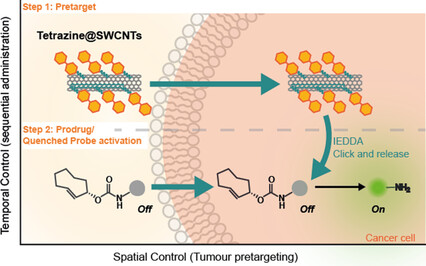
Pretarget then activate: Functionalization of single-walled carbon nanotubes (SWCNTs) with tetrazines led to a stable and biocompatible material that undergoes a rapid inverse-electron-demand Diels–Alder reaction with trans-cyclooctene caged molecules. This approach enables bioorthogonal activation of responsive drugs or probes in solid tumours in a strictly controlled manner.
Perovskites
Cs2PtI6 Halide Perovskite is Stable to Air, Moisture, and Extreme pH: Application to Photoelectrochemical Solar Water Oxidation
- Pages: 16167-16172
- First Published: 21 May 2020
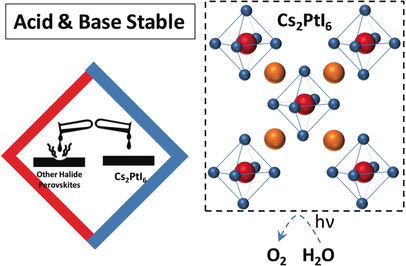
Stability: Despite the excellent optoelectronic properties of halide perovskites, their stability under ambient conditions and, more importantly, in aqueous medium are poor, thus limiting their application in solar photoelectrochemical (PEC) devices. Reported here is an extremely stable vacancy ordered halide perovskite, Cs2PtI6, which is stable for at least one year under ambient conditions and for 24 hours in extreme pH conditions. It also demonstrated 12 hours of solar PEC water oxidation, without any surface protection.
Heterogeneous Catalysis
Methanol Synthesis at a Wide Range of H2/CO2 Ratios over a Rh-In Bimetallic Catalyst
- Pages: 16173-16180
- First Published: 27 May 2020
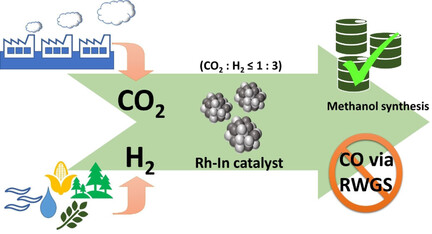
The bimetallic Rh-In catalyst offers selective sites for capturing hydrogen and CO2 to approach methanol formation under H2-deficient feedstock compositions with high methanol yield but minimizing the reverse water-gas shift reaction. Using this catalyst, a convenient methanol synthesis based on renewable biomass-derived feedstocks with lower energy costs can be established.
Membranes
Catalytically Active Hollow Fiber Membranes with Enzyme-Embedded Metal–Organic Framework Coating
- Pages: 16181-16187
- First Published: 29 May 2020
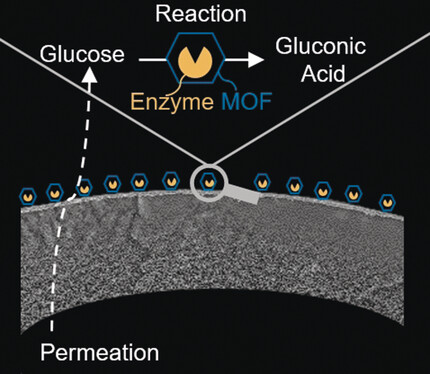
Passing through: Reported for the first time is the successful in situ biomineralization of an enzyme-containing metal–organic framework (MOF) layer on a polymeric hollow fiber in a facile one-step process. The interconnection between an enzymatic active layer and a porous membrane overcomes stability drawbacks, removes the need for MOF separation, and leads to increased enzyme activity as a result of the improved mass transport by permeation.
Anti-Counterfeiting
Wide-Range Color-Tunable Organic Phosphorescence Materials for Printable and Writable Security Inks
- Pages: 16188-16194
- First Published: 05 June 2020
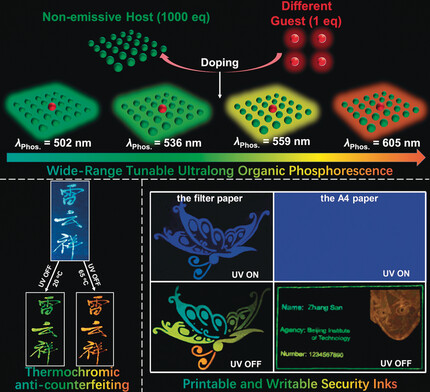
Multicolor swap shop: A facile doping approach for color-tunable organic phosphorescence materials is enabled through hosts that not only restrict the molecular motion and avoid the triplet quenching from the oxygen, but also interact with the guests for the realization of phosphorescence. Color tunable, temperature dependent, and time-resolved anti-counterfeiting techniques are achieved by the printable and writable materials.
Metal–Organic Materials
Molecular Spring-like Triple-Helix Coordination Polymers as Dual-Stress and Thermally Responsive Crystalline Metal–Organic Materials
- Pages: 16195-16202
- First Published: 25 May 2020
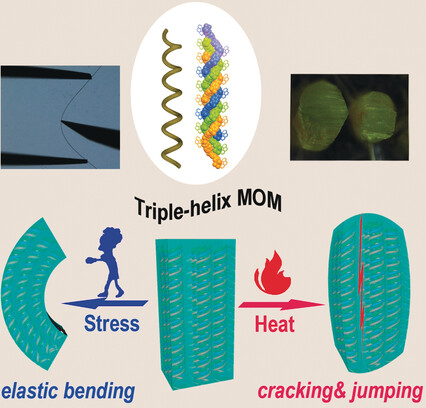
Dual-stress and thermally responsive crystalline metal–organic materials (MOMs) based on molecular spring-like triple-helix coordination polymers are presented. As the first example of thermosalient effect in elastic MOMs, these compounds undergo elastic flexure upon external stress as well as cracking and jumping after thermal treatment.
Proteomics | Hot Paper
Chemical Proteomic Profiling of Protein 4′-Phosphopantetheinylation in Mammalian Cells
- Pages: 16203-16209
- First Published: 14 June 2020

By developing a new generation of pantetheine analogue probes, the metabolic labelling and chemoproteomic profiling of protein 4′-phosphopantetheinylation in mammalian cells were achieved. Targeted chemical proteomics facilitated the identification of exact 4′-phosphopantetheinylation sites, including all five currently known sites and a potential site in the mitochondrial dehydrogenase/reductase SDR family member 2 (DHRS2).
Cross-Coupling | Hot Paper
Nickel-Mediated Trifluoromethylation of Phenol Derivatives by Aryl C−O Bond Activation
- Pages: 16210-16216
- First Published: 25 May 2020
Analytical Chemistry | Hot Paper
Peak Force Infrared–Kelvin Probe Force Microscopy
- Pages: 16217-16224
- First Published: 28 May 2020
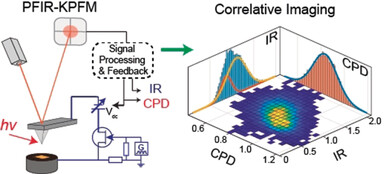
Force to be reckoned with: The correlations between nanoscale electrical, chemical, structural, and mechanical surface properties were explored in perovskite and amyloid fibrils with intrinsically integrated peak force infrared and Kelvin probe force microscopies. Correlative nanoimaging serves as a useful tool for deciphering the important underlying causal relationships between properties in situ.
Bioinorganic Chemistry
Formation and Structure of Fluorescent Silver Nanoclusters at Interfacial Binding Sites Facilitating Oligomerization of DNA Hairpins
- Pages: 16225-16231
- First Published: 09 June 2020
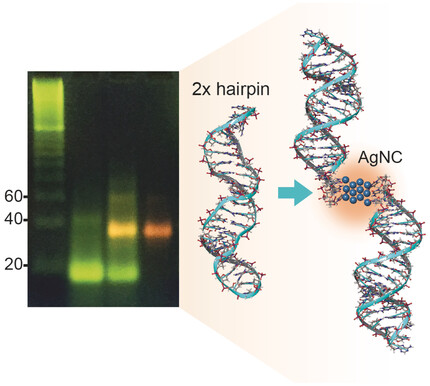
Emissive silver nanoclusters formed with cytosine-loop hairpin DNA sequences self-assemble as highly emissive dimers exhibiting a head-to-head interaction interface. These dimeric species only form emissive dimers when synthesis is initiated from DNA in the monomeric hairpin conformation. The orange emissive AgNCs were found to be composed of 12 Ag per dimer with the dimerization mediated by the nanocluster.
CO2 Reduction Reaction
In Situ Scanning Tunneling Microscopy of Cobalt-Phthalocyanine-Catalyzed CO2 Reduction Reaction
- Pages: 16232-16237
- First Published: 04 June 2020
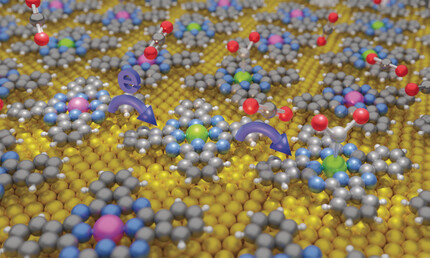
Imaging the electrocatalytic process: The cobalt-phthalocyanine-catalyzed CO2 reduction reaction is investigated by electrochemical scanning tunneling microscopy at the molecular scale. The molecular processes of the reaction, including the reduction of CoII, the binding of CO2, and the subsequent process, are revealed.
Donor–Acceptor Systems
How To Make Nitroaromatic Compounds Glow: Next-Generation Large X-Shaped, Centrosymmetric Diketopyrrolopyrroles
- Pages: 16238-16247
- First Published: 03 June 2020

Go with the glow: A two-step process has been developed that transforms parent diketopyrrolopyrrole into structures with up to 10 fused rings. The absorptions are bathochromically shifted to the deep-red region and strong red emission is seen, even in nonpolar solvents, despite the presence of NO2 groups.
Intersystem Crossing
Elucidation of the Intersystem Crossing Mechanism in a Helical BODIPY for Low-Dose Photodynamic Therapy
- Pages: 16248-16255
- First Published: 24 May 2020

PDT with a twist: The intersystem crossing (ISC) mechanism of a heavy atom-free helical bodipy derivative was elucidated. Due to the intense absorption at long wavelengths (ϵ=1.76×105 m−1 cm−1 at 630 nm), satisfactory triplet quantum yield (ΦT=52 %), and long-lived triplet state (τT=492 μs), a record low-dose photodynamic therapy (PDT)-augmented immunotherapy was achieved.
Protein Design | Hot Paper
Cellular Synthesis and X-ray Crystal Structure of a Designed Protein Heterocatenane
- Pages: 16256-16261
- First Published: 07 June 2020

Protein heterocatenanes could be readily and modularly synthesized in cellulo using a programmed sequence of post-translational processing events, including intramolecular chain entanglement, in situ backbone cleavage, and spontaneous cyclization. The catenane topology of the designed protein was rigorously proven by X-ray crystallography.
Dual Catalysis
Enantioselective Preparation of Arenes with β-Stereogenic Centers: Confronting the 1,1-Disubstituted Olefin Problem Using CuH/Pd Cooperative Catalysis
- Pages: 16262-16266
- First Published: 21 May 2020

It takes two: CuH/Pd-catalyzed enantioselective hydroarylation of 1,1-disubstituted alkenes proceeds with anti-Markovnikov regioselectivity under mild conditions to access β-stereogenic arenes. A wide range of aryl bromides, including several heterocycle-containing substrates, can be used with good efficiency and enantioselectivity. Various 1,1-disubstituted alkenes were also examined.
Electrostatic Interactions
A Fullerene-Based Molecular Torsion Balance for Investigating Noncovalent Interactions at the C60 Surface
- Pages: 16267-16274
- First Published: 26 May 2020

Well balanced: A fullerene-based molecular torsion balance is constructed to investigate noncovalent arene–fullerene interactions. The interactions are weak but measurable. The linear correlation between the difference in the free energies of two well-defined conformers and the Hammett constants of the substituents on the arene moieties indicate that the electrostatic interactions are a significant contribution.
Cryptand Complexes
Synthesis of LnII-in-Cryptand Complexes by Chemical Reduction of LnIII-in-Cryptand Precursors: Isolation of a NdII-in-Cryptand Complex
- Pages: 16275-16280
- First Published: 22 May 2020

The first THF-soluble LnIII-in-cryptand complexes synthesized by using lanthanide triflates were chemically reduced using KC8 to generate a SmII-in-cryptand complex and the first neutral NdII-in-cryptand complex. Experimental and theoretical analysis assign the NdII ion a 4f4 electron configuration opposed to a 4f35d1 electron configuration.
Organometallic Chemistry
Shedding Light on the Diverse Reactivity of NacNacAl with N-Heterocycles
- Pages: 16281-16287
- First Published: 20 May 2020
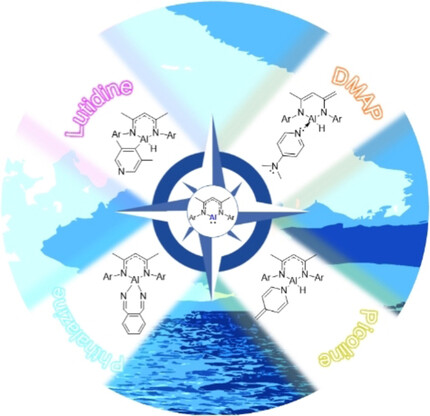
Reactivity pathways of NacNacAl with various N-heterocycles have been investigated and diverse and highly substrate-controlled reactivity patterns have been discovered. Cases of unusual sp3 and sp2 C−H bond activation, C−C coupling, and N−N bond cleavage are reported. NacNac=[ArNC(Me)CHC(Me)NAr]−, Ar=2,6-iPr2C6H3.
Fluorescent Probes
A Multi-responsive Fluorescent Probe Reveals Mitochondrial Nucleoprotein Dynamics with Reactive Oxygen Species Regulation through Super-resolution Imaging
- Pages: 16288-16294
- First Published: 22 June 2020
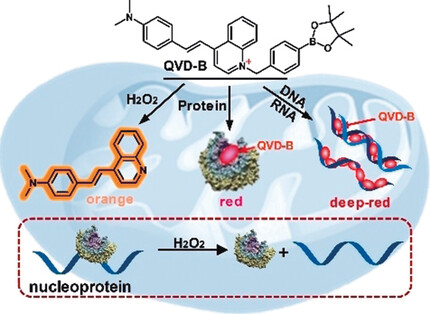
Triple threat: A mitochondria-targeting probe switches on in three different fluorescence modes in response to H2O2, protein, and nucleic acids, enabling the visualization of mitochondrial nucleoprotein dynamics. Super-resolution imaging reveals that the proteins localize at mitochondrial cristae and largely fuse with nucleic acids to form nucleoproteins, whereas increasing H2O2 levels lead to disassociation of the nucleoproteins.
Porphyrinoids
Near-Infrared-III-Absorbing and -Emitting Dyes: Energy-Gap Engineering of Expanded Porphyrinoids via Metallation
- Pages: 16295-16300
- First Published: 02 June 2020
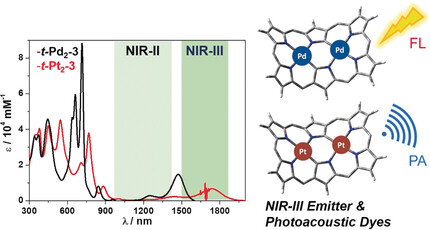
For your dyes only: Bis-metallation of expanded porphyrin analogues induced a remarkable dπ–pπ molecular-orbital mixing that resulted in extremely narrow HOMO–LUMO gaps. The metal-complex dyes exhibited emissive and photoacoustic properties in the third near-infrared region (NIR-III) beyond 1500 nm.
Al Co-catalyst
Silica-Grafted Tris(neopentyl)aluminum: A Monomeric Aluminum Solid Co-catalyst for Efficient Nickel-Catalyzed Ethene Dimerization
- Pages: 16301-16306
- First Published: 25 May 2020
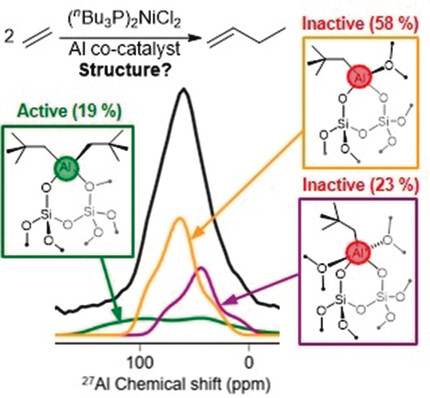
Isolation for activity: A solid co-catalyst with monomeric Al sites for Ni-catalyzed ethene dimerization was prepared by grafting Al(CH2tBu)3 on partially dehydroxylated silica and characterized by 27Al solid-state NMR spectroscopy augmented by DFT computations. The efficient co-catalytic properties of the material were attributed to the presence of monografted alkylaluminum species, representing 19 % of all Al species.
Fluorescent Probes
Dual-Mode Superresolution Imaging Using Charge Transfer Dynamics in Semiconducting Polymer Dots
- Pages: 16307-16314
- First Published: 10 June 2020

Pdots and moonbeams: By controlling the population of photogenerated holes, dual-mode superresolution imaging with semiconducting polymer dots was demonstrated. The localization precision achieved is 3–8 times better than the typical resolution obtained by localization of dyes and fluorescent proteins, which allows the hollow structure of microtubules to be resolved.
Silylation
Building up Strain in One Step: Synthesis of an Edge-Fused Double Silacyclobutene from an Extensively Trichlorosilylated Butadiene Dianion
- Pages: 16315-16321
- First Published: 02 June 2020
Porous Materials
Ultramicropore Engineering by Dehydration to Enable Molecular Sieving of H2 by Calcium Trimesate
- Pages: 16322-16328
- First Published: 25 May 2020
Poisson Effect
Anisotropic Poisson Effect and Deformation-Induced Fluorescence Change of Elastic 9,10-Dibromoanthracene Single Crystals
- Pages: 16329-16335
- First Published: 03 June 2020
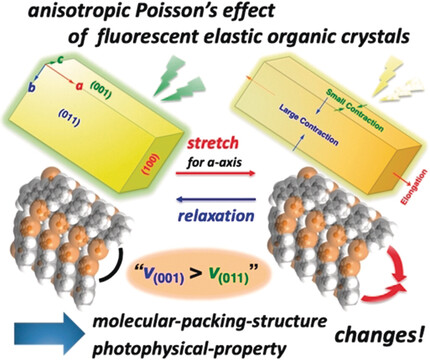
The anisotropic Poisson effect of an elastic 9,10-dibromoanthracene single crystal was observed. The macroscopic anisotropic Poisson effect is well consistent with microscopic anisotropic Poisson effect in the level of molecular packing structure that was simulated by DFT calculations. Its bending and stretching deformation-induced fluorescence changes were observed as well.
Cross-Coupling Reactions
Transition-Metal-Free C(sp2)–C(sp2) Cross-Coupling of Diazo Quinones with Catechol Boronic Esters
- Pages: 16336-16342
- First Published: 17 June 2020

Without transition metal catalysts, diazo quinones undergo cross-coupling with catechol boronic esters to give a variety of biaryls and alkenyl phenols in up to 96 % yield under mild conditions. The reaction is applicable to the synthesis of multi-substituted triphenylenes and natural products honokiol, moracin M, and stemofuran A. DFT calculations revealed a stepwise mechanism involving attack of the boronic ester by a singlet quinone carbene.
Oxygen Reduction Reaction
Heteroatom Dopants Promote Two-Electron O2 Reduction for Photocatalytic Production of H2O2 on Polymeric Carbon Nitride
- Pages: 16343-16351
- First Published: 20 May 2020
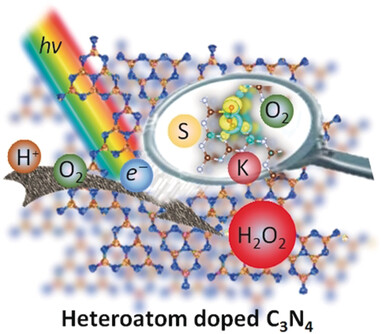
Heptazine-based C3N4 photocatalysts with heteroatom dopants exhibit potassium-induced interlayer charge separation and local charge polarization on sulfur sites. This facilitates O2 adsorption and the subsequent two-electron reduction of dioxygen to achieve highly efficient and selective production of H2O2 up to a millimolar level per hour and 100 % apparent quantum yield at 420 nm.
Biotransformation
Profiling and Identification of Biocatalyzed Transformation of Sulfoxaflor In Vivo
- Pages: 16352-16358
- First Published: 02 June 2020

The biotransformation of the neonicotinoid pesticide sulfoxaflor and the metabolic responses in Sprague-Dawley rats was investigated. Sulfoxaflor transformation was catalyzed by cytochrome P450 while five phase I and four phase II metabolites were identified in vivo. Exposure to sulfoxaflor caused dysregulation of bile acid synthesis and reabsorption by the expression of farnesoid X receptor (FXR).
Bioinformatik | Hot Paper
Eine einfache Strategie zur Korrektur des Fehlers aufgrund von Hexosylierung bei relativer Quantifizierung der N-Glykosylierungsvarianten von Biopharmazeutika
- Pages: 16359-16367
- First Published: 04 June 2020
Spiroverbindungen
Der Einfluss von Aggregation auf die Photophysik von spiroverbrückten Heterotriangulenen
- Pages: 16368-16376
- First Published: 29 May 2020
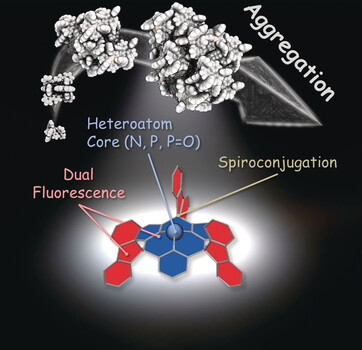
Gemeinsam etwas bewirken: Der Einbau von Heteroatomen in spirokonjugierte Triangulene und die damit verbundene Struktur-Eigenschafts-Beziehung wurde untersucht. Im Fokus stehen die molekulare und elektronische Struktur, die duale Fluoreszenz (Kern und Seitengruppen) und das Aggregationsverhalten in Solvens-Antisolvens-Gemischen.
Polypnictogen-Komplexe
Die Iodierung von cyclo-E5-Komplexen (E=P, As)
- Pages: 16377-16383
- First Published: 28 May 2020
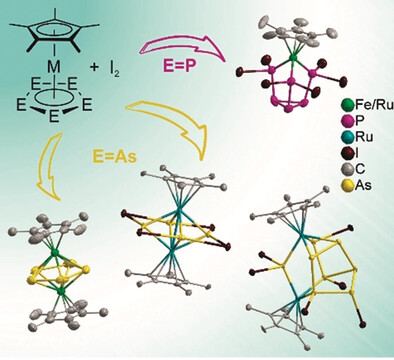
Die Iodierung von cyclo-E5-Komplexen zur Synthese von Polypnictogen-Komplexen wird vorgestellt. Bei der Reaktion von [Cp*M(η5-P5)] (M=Fe, Ru) mit Iod wurden [Cp*MP6I6]+-Kationen mit tripodalen cyclo-{P(PI2)}3-Liganden gebildet. Bei cyclo-As5-Komplexen wurden der erste dikationische Fe-As-Tripeldecker-Komplex, der erste monokationische Ru-As5-Tripeldecker-Komplex und zwei Isomere eines Komplexes mit einem einzigartigen Tetramer von Iodarseniden-Einheiten gebildet.




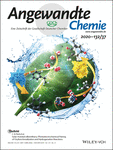



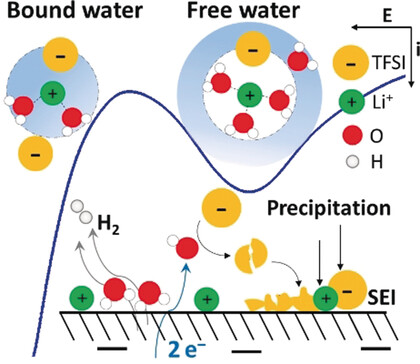
![Compressing Double [7]Helicene by Successive Charging with Electrons](/cms/asset/f20aca86-52e5-4fce-88e8-674d769b9fe5/ange202005852-toc-0001-m.jpg)

